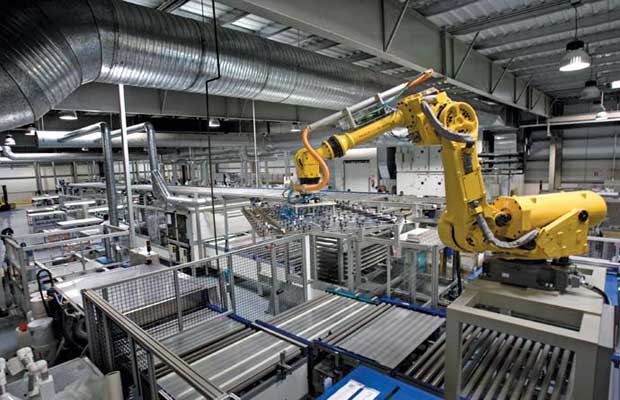 How China Became The Global Renewable Leader?
How China Became The Global Renewable Leader? Every crisis brings an opportunity with it. This is because obstacles considered insurmountable earlier, can become a lot more manageable in the rush of a crisis. India’s government has clearly decided to use the Covid-19, followed by the now bloody border dispute with China, as the opportunity to set things right for manufacturing in India. Efforts have ranged from lower corporate taxes, to allowing benefits for assembling in India, to now, some seriously high duties on solar equipment, an area where we have been particularly dependent on China made imports.
The solar sector, and its dependence on imports, has been a frustrating issue for far too long, pointing to just why a seemingly quick resolution like levying high import duties won’t work.
For one, the energy sector is intimately linked to the health of the economy, and despite every effort to fix it, remains in great stress. Power Minister R.K. Singh had shared the same sentiments in his meeting with state power ministers and CM’s last week, when he stressed that ‘business as usual ‘ of bail outs for the power sector simply couldn’t continue. This, when actual losses in the sector already seem to be much higher than power ministry estimates. A report in the Financial Express today says that PFC-audited data shows that state-run discoms in the country suffered combined losses of Rs 61,360 crore in FY19, more than double the figure of Rs 28,036 crore put out by the Union power ministry earlier, based on inputs from the discoms.
The audited figures for FY18 also showed the discoms’ losses were more than double the level earlier reported at Rs 33,365 crore, the same report adds.
In this context, Mr Singh’s stress at the state ministers meet, to place the consumer at the centre in power too, makes sense, though wildly ambitious considering the existing ground situation. Quite simply, that equates to ensuring that every paying consumer gets power at a reasonable cost, 24X7.
Until 5 years back, the possibilities in solar were a distant dream, till one of the most sustained drops in prices started, thanks to China placing its manufacturing muscle behind it. Prices have dropped by 86 percent over the decade, to the current cost of approximately Rs 3.8 to Rs 4.5 crores per megawatt, depending on the developer and financial institution you check with. That capital cost per megawatt easily matches any other energy source today, and comfortably beats hydro, the biggest ‘renewable’ source of energy till date.
Cost per unit in solar tender bids have fallen to well under Rs 3.00 on average now, despite a 15 percent duty on imports for the past year. For India, the Safeguard duty, that started at 25 percent, and ends at 15 percent, this month, clearly failed to spur manufacturing. Not only did it fail to drive any significant investment into manufacturing, it also created a logjam of disputes and higher prices eventually for the end consumer. Some lessons have obviously been learnt there, as we see from the announcement that PPA’s signed before August 1, when the new duty regime of basic customs duty replaces safeguard duty, will be exempt. That seems to have been a key reason for the record low sub Rs 2.40 prices seen in the last SECI auction.
But now, the new proposal is for a duty level of 25 percent in year 1, followed by an escalation to 40 percent in year 2. Some industry leaders on the manufacturing side have insisted that even that may not be enough, asking for duty rates of 50 percent or higher even.
The government needs to move carefully. After all, if subsidies have been blamed for some of the biggest ills of the sector, a duty, at the end of the day, is nothing but a subsidy for manufacturing.
The government has many options including taking a cue from the Scheme for Promotion of Manufacturing of Electronic Components and Semiconductors (SPECS). It can provide incentives such as upfront 25 per cent Central Financial assistance on capital expenditure, interest subvention and export incentives for solar module and cell manufacturing.
A manufacturing ‘boom’ that is led by just 2 or three firms will not serve at all, especially if those firms are also developers themselves.
Manufacturers in the range of 100 MW to 500 MW must see a viable path to growth too, to encourage more competition and innovation here.
Subsidies can prove to be extremely sticky, one reason why the SGD came with a clear sunset clause perhaps. We believe the same view needs to be applied to a fresh duty regime, even if the time period is a much longer 5 years or so.
Interestingly, while the focus has been on cells and modules, our dependence on imports for wafers and polysilicon (ingots) is even higher, and those are dominated by a handful of Chinese firms with very strong pricing power.
It also needs to look at how badly domestic demand, especially in the rooftop segment has been mangled, which is linked to both discom distress and poor policies at state level. Just fixing that, for instance, can help create a market for quality domestic manufacturers and encourage a shift to Mono Perc and Bifacial manufacturing even, than anything else the government does. A rooftop market that can comfortably absorb 2-2.5 GW exists in this country, and with more open prices, the segment offers a clear path to modernising the sector
Similarly, simply executing the PM KUSUM scheme, can also easily add another GW to that domestic demand easily. Keep in mind that KUSUM holds potential to clean up a lot of discom balance sheets too, besides closing the subsidies chapter in farming gradually.
An obsession with utility scale solar, perhaps due to the high commitments made for 2022, have delivered mixed results, in the form of a strong base and ecosystem of renewable energy players, but continued import dependence and perhaps, questionable quality too, due to the pricing challenge. A high duty regime will possibly encourage manufacturing, but at the cost of higher consumer prices. If no better option exists, it is the government’s duty to ensure that higher price burden does not become really long term.
With solar installations maturing, it is also becoming increasingly clear that legacy practices like a 25 year PPA itself might need to be questioned, especially if reforms like removal of cross subsidies, better open access rules, and even dedicated feeder networks for agriculture take shape. It seems increasingly anachronistic that even at a price that is a third of hydro power at times, and uniformly under coal powered electricity, solar power producers still need the guarantee of a PPA to be considered viable.
Even solar+ Storage today is under Rs 4 per unit, a price well below the top end of the power PPA’s signed by almost every Indian state with thermal producers. A look at the government run merit India site shows how marginal cost of power for almost every state today is higher than the average cost of solar power being added to the grid since 2019 (Rs 2.90 per unit) . That makes a powerful case for even faster changes to enable a solar, and wind powered transition, with storage added on where it is replacing retiring thermal plants.



























